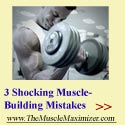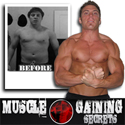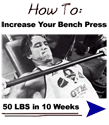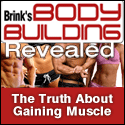(bài viết này là nhờ công sức và kinh nghiệm xương máu của Thương – Iloveme ) (bài này mình tạm thời để dưới dạng tiếng Anh. KHi nào có thời gian sẽ dịch lại ra tiếng việt cho mọi người sau nhé)
Hôm thứ 6 tuần trước em đang tập thì tự dưng bị đau đầu ở mấy reps cuối. Đau từ gáy xong lên tới đầu. Ghê wá nên em nghỉ luôn rùi về ask uncle Google. Em tìm được cái discussion có một bài giải thích. Paste lên share cho anh em thận trọng.:
I’m a Strength & Conditioning Coach and co-founder of Agility. Power. Endurance. Xplosiveness. LLC (A.P.E.X. LLC, a strength & conditioning company based in Montgomery County Maryland) and have been training as an athlete and working with both athletes and general population for over 10 years and have experienced these headaches personally as well as have had some clients experience them. I’m a graduate of the University of Maryland with a BS in Public Health with a concentration in Kinesiology & Exercise Physiology. Before we begin, it’s important to mention that I am not a doctor, nor do I intend for this article to be a replacement for a medical visit. This is a discussion on headaches. For what it’s worth, here’s what I’ve learned…
First off, there are a few different types of headaches related to exercise, and the one I am going to talk about is an EXERTION HEADACHE. Exertion headaches typically occur after a set of a compound leg movement (Leg Press, Squats, Deadlifts, etc.) performed to failure or close to failure. Right after the set, or maybe even on the final rep, an intense headache occurs typically in the back of the head. What actually occurs is that the blood vessels in your brain expand beyond their normal thresholds which puts pressure on the meninges (small nerves that cover the brain) which causes the painful headache. The headache subsides once the heart rate drops along with the blood pressure, but the headache lingers because the meninges remain extra sensitive.
The cause seems to be a combination of factors that come together to cause the perfect storm. I will touch on each factor and explain how it’s related, and then discuss ways it can be prevented.
Typically exertion headaches occur when a combination of the following circumstances are true:
1. You’re Dehydrated: Dehydration thickens your blood
2. Valsalva (Holding Breath): This causes a dramatic spike in blood pressure
3. Poor Neck Position: Anything other than a neutral spine causes constrictions on the Carotid Arteries, the main arteries that deliver blood to the brain.
4. Increased Heart Rate: As a set progresses, your heart rate will steadily climb so that by the end of your set it can be close to (or above) your maximal heart rate.
5. Heavy Weight on Body: The more weight you have on your body, the more your blood pressure will rise as you exert yourself lifting it. Because legs are the strongest muscle group in the body, you typically lift more weight with your legs. The correlation with heavy weight and an increase in blood pressure makes compound leg movements more risky than other movements.
So, you’re doing a set of squats with a good amount of weight (5), and it’s your second or third set so you’re feeling a little thirsty (1), and you knock out 6 or 7 reps and you feel your heart pounding (4). Up until this point your breathing has been perfect, but to get out those last few reps you hold your breath a little to give support your tired low back (2). To keep that back straight, you look up at the wall to try to maintain good posture (3). You do a few more reps, blood pressure and heart rate continue to rise, that thick dehydrated blood is trying to work its way through constricted arteries due to the bent neck, plus you’ve got a lot of weight on you, then you hold your breath a second too long… and BOOM! Headache…
Sound familiar? And it doesn’t have to be all these factors. Now let’s see what can be done to prevent it, and what can be done if it has already happened.
To prevent an exertion headache:
1. BE Hydrated: Drink enough water that you’re piss is white the day before your lift and the day of, and drink water during your workout.
2. NEVER Hold Your Breath: Most good lifters pride themselves on having good form. When I’m working with a client, in addition to proper mechanics, I include proper breathing as a requirement for a rep to count. “Your holding your breath, that rep doesn’t count.”
3. Maintain a NEUTRAL SPINE: Unless you’re performing a neck exercise, there is no need for your neck to be bent. Let it be comfortable and neutral and focus on the target muscle.
4. Allow for RECOVERY/ do CARDIO: First of all, do some cardio to condition your heart and lungs to be able to work hard. This will prevent the body from being too shocked on rep 9 and 10 on those Squats! Second of all, give yourself enough time between sets and exercises for your heart rate to come down. You shouldn’t jump in to the next set or exercise while your heart is pounding. Not only will you not perform as well because your cardiovascular system will fatigue before the muscle your training, but you will also put yourself at risk for the headache. As a general rule, any time you’re doing a heavy compound movement, especially on legs, make sure your heart rate is comfortable before you begin the set.
5. Single-Leg, Single Joint / It is what it is: Try doing some single-leg leg extensions before you do your squats to pre-fatigue them so they go to failure sooner. Also, single joint leg movements can help you isolate the quads and ham strings so you can strengthen them through their entire range of motion which will help your Squat/Deadlift. However, it is what it is. As long as you can handle the heavy weight with good form, you should do it. It is what it is. Heavy weight on the squat bar/leg press/hack machine is GOING to cause an increase in your blood pressure. As long as 1-4 are good to go, move whatever weight you can control with good form.
Let’s say you get an exertion headache during a workout. STOP. You’re done for the day. You’re done for the week! And in the grand scheme of things, one week off is probably good for you anyway. It doesn’t make sense to keep pushing that same day, or even again that week, because IT WILL ABSOLUTELY cause the headaches to persist. Once the meninges have flared up, they will be sensitive for at least a week, sometimes months, so let it calm down. Some Advil, Motrin, or Ibuprofen in general will help reduce the swelling of the blood vessels which will relieve the pain temporarily. Drink lots of water, take some Ibuprofen for the next few days, and LET IT HEAL unless you want it to continue. And if your reading this because you got the headache a while ago and it still happens, STOP LIFTING, do the above, and give it time to heal.
So, you take the week off, you’re hydrated and have been taking Ibuprofen the last week and you’re ready to give it a go. Here’s what I’ve found to be a wise way to transition back into lifting.
NO compound leg movements. Squats, Deadlifts, Leg Presses, Hack Squats, and Power Cleans should be abandoned for 2-4 weeks. To work your legs, do single-leg leg extensions and leg curls, adductors and abductors. This will allow you to maintain strength without overloading your frame with weight. After a month or so, slowly start back with single-leg leg presses and some LIGHT lifts with squats, deadlifts, etc. NOT TO FAILURE, with a relatively low heart rate to allow your body to re-acclimate. Stay hydrated, practice good breathing habits while weights are low, and get comfortable having a neutral neck during lifts. And remember, CARDIO is critical in helping you condition your body so that your heart rate doesn’t climb too high during strength training. Also, if when you return to exercise at any time the exertion headache comes back, you’re done for the day, and done for the week. Repeat the recovery.
Remember, an EXERTION HEADACHE is an INJURY TO THE BRAIN. If not taken seriously, it won’t go away and can become worse. Just like any other injury in the gym, certain steps must be taken to transition the body back to a high performance level again. Hopefully you find this to be helpful. If you have any questions, email me at nick.ryan@apexllc.org orj.nick.ryan@gmail.com. You can also check out our company website at www.apexllc.org. Thanks.







I truly enjoy reading through on this website , it contains fantastic content . “A man of genius has been seldom ruined but by himself.” by Samuel Johnson.